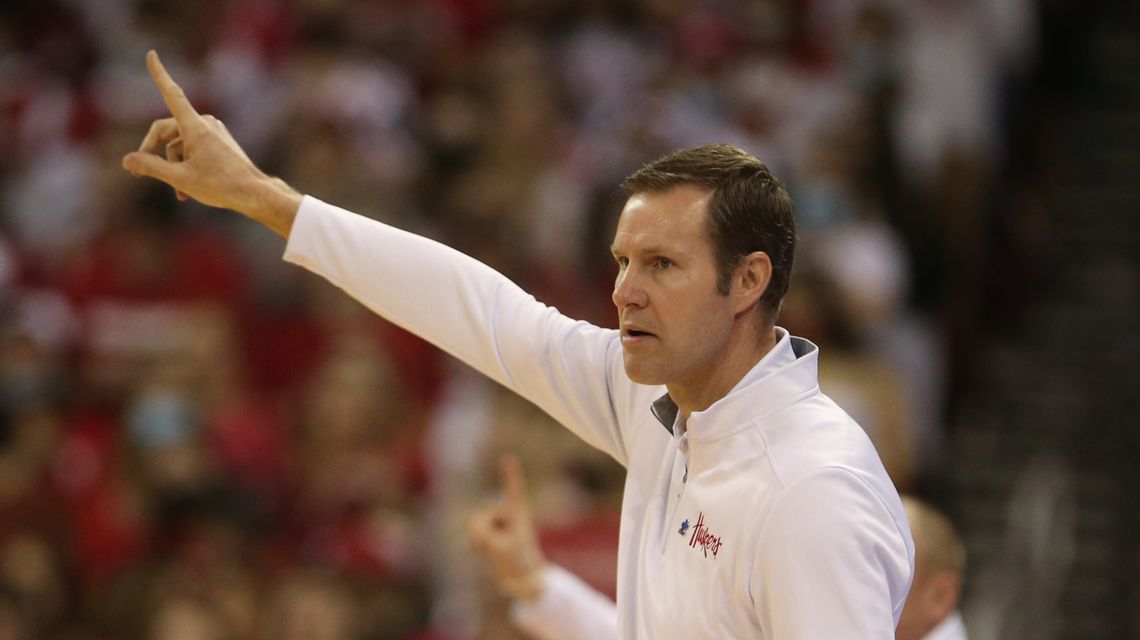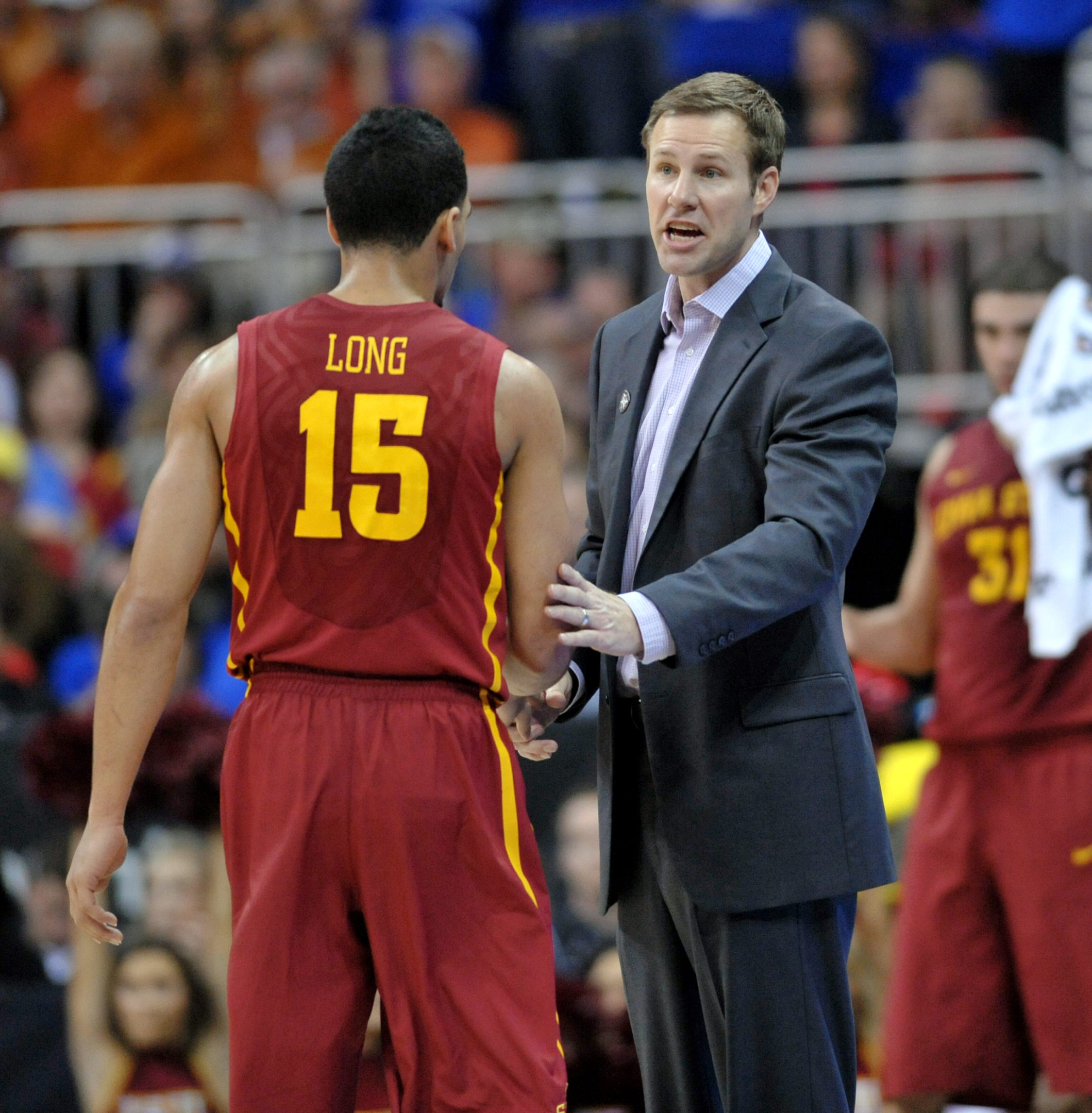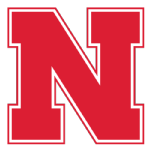
Fred Hoiberg: A storied career filled with promise and misfortune
LINCOLN, Neb. (BVM) — Fred Hoiberg, a promising high school athlete turned one of Michael Jordan’s competitors, has lived a life full of the game of basketball. Although his professional career was cut short, he still rides the waves in the vast ocean of basketball.
Hoiberg grew up as a multi-talented athlete at Ames High School in Ames, Iowa. His coach appointed him captain and quarterback for the 1991 football team as well as the shooting guard on the 1991 state-winning basketball squad. After his run at Ames High, Hoiberg committed to the Big Eight Conference powerhouse Iowa State Cyclones. While there, fans and coaches alike debated if Hoiberg was the greatest to ever play at Iowa State. He is among the top seven ranking for every statistical category (points per game, assists per game, rebounds per game, steals per game and blocks per game), he was also elected to second team All-Big Eight in 1994 and elected to first team All-Big-Eight in 1995. Hoiberg’s No. 32 retired at Iowa State and gained the nickname, “The Mayor” after he received several write-in votes during the 1993 Ames mayoral race.

After his stint at Iowa State, Hoiberg declared for the 1995 NBA Draft. The Indiana Pacers drafted him No. 52 overall. In his first two seasons with Indiana, Hoiberg only played 62 games and started one. After his second season, he continued to play off the bench at Indiana. In his 65 games played that season, Hoiberg averaged only 13 minutes a game, but shot an above average 37% from 3-point range.
Once his four years at Indiana were over, Hoiberg, now a free agent, signed with the Chicago Bulls where he had the best statistical year of his career. He started a total of 37 games averaging 30 minutes per game. Along with those minutes, he shot 43% from the field as well as 41% from deep. Although he only averaged nine points per game, Hoiberg seemed to finally land a spot on a roster that would be accompanied by playing time.
That playing time would not last however as Hoiberg was coming off the bench for almost his entire juncture in Chicago. He only started 45 games during his three-year journey with the Bulls.
After Hoiberg’s three years on the Bulls, he was once again eligible for free agency. He signed with the Minnesota Timberwolves on July 28, 2003. There, Hoiberg finally got the recognition of being a dead-eye 3-point shooter. Although he still could not breach the Timberwolves’ starting five, in his first year with Minnesota he shot 46% from the field and 44% from three, both career high percentages only in his first year of being on the new squad. As the 2004 season was under way, Hoiberg became lights out off the bench. He reached another career high of 49% shooting from the field as well as 48% from beyond the arc, very impressive numbers by today’s standards. As the All-Star break came around, Hoiberg looked to be a lock in the 3-point shooting contest considering he led the league in 3-point shooting percentage. But he was left in the dark. Even in 2022, Fred Hoiberg is the only NBA player to be the league’s leading 3-point shooter that was not chosen to participate in the 3-point shooting contest.
Hoiberg’s career was finally looking for a turn, stardom was in his grip. Then, he got a call from his doctor.
Hoiberg underwent surgery in June 2005 to fix an enlarged aortic root. His doctor said he would never play professionally again. But after some rehabilitation and determination, Hoiberg sought to fight his way back onto the squad. But sadly, it wouldn’t last long. He announced his retirement 10 months after his surgery on April 17, 2006 and took a job in the Timberwolves front office.
After being with the Minnesota Timberwolves for four years, Hoiberg received an offer from Iowa State to return, this time, in a suit and tie.
On April 27, 2010, Hoiberg accepted the head coaching position at Iowa State. Hoiberg didn’t take long to get right into the swing of things as his first win came as an unofficial exhibition against Dubuque on November 5, 2010, with a final score of 100-50. His first official win was against Northern Arizona, 78-64 on November 12, 2010 and he received his first Big 12 victory on January 15, 2011 against Baylor. In the 2011-12 season, Hoiberg led his team to the program’s first NCAA Basketball Tournament appearance since 2005, also including their first AP Top 25 poll appearance since 2005. He was declared the 2012 Big 12 Co-Coach of the Year after winning nine more games during the 2012 conference season than 2011, which still stands as the largest season-to-season improvement in Big 12 history. In April 2013, he signed a 10-year contract with Iowa State worth $20 million. In the next two years, he would lead the Cyclones to two Big 12 tournament titles and two more NCAA Tournament appearances, one of which, made it into the Sweet 16 (2013-14).

After his fifth season as the Iowa State head coach, Hoiberg used a loophole in his contract that allowed him to take a head coaching position with the Chicago Bulls in 2015 for $500,000.
His first season as head coach of the Bulls could’ve gone better. Hoiberg and his team finished just above .500 with 42 wins and 40 losses, missing the playoffs in his inaugural season. In his second season, things started to look up as the Bulls made the playoffs, but unfortunately lost in the first round. Hoiberg could not stop the tumble after that as the Bulls ended the 2017-18 season with a record of 27 wins and 55 losses, a record that could not escape the media as ESPN ranked him the worst head coach in the league. The season after that, the Bulls front office thought that he was underachieving in the professional environment and fired him after a 5-19 start to the 2018-19 season.

Only three months after being fired from the Bulls, Coach Hoiberg got another call, not from an NBA team but from another collegiate team.
On March 30, 2019, the Nebraska Cornhuskers men’s basketball team needed a new head coach to fill the empty spot. His first year in Nebraska wasn’t anything to write home about. They finished with seven wins and 25 losses while being 2-18 in Big 10 play. But the new year came and went as Nebraska still struggled to find a place high up the list in the Big 10.
During the Big 10 tournament on March 11, 2020, the Cornhuskers played the Indiana Hoosiers. During the second half of the game, Hoiberg was noticeably uncomfortable. He was sitting down on the bench, pale and sweating during the last four minutes of the game. Some of the trainers looked at him, and they told him that he should go to the hospital. He left the game with four minutes left and headed to the local hospital. Due to the emerging coronavirus threat at the time, the entire Cornhusker team was forced to quarantine two hours after the game’s conclusion. Hoiberg’s tests came back positive for Influenza A. In a statement later posted to Twitter, Hoiberg said that he was cleared that night by tournament doctors stating, “I would never knowingly put my team, my family or anyone else in danger.”
Hoiberg has continued to work with the Nebraska coaching staff and players to heave the program out of the ground and turn it into a prosperous Big 10 basketball powerhouse, but for now, Hoiberg’s record is miles below .500 at 24-67 (.264) in his three seasons at Nebraska.
Coach Hoiberg had a very promising upbringing. A state winning basketball star, drafted by the Pacers in 1995. He bounced around a couple teams trying to find a fit. But as his health started to decline, he wanted to put his knowledge of the game of basketball to use in various coaching jobs on the collegiate and professional level. Hoiberg is an inspiration to athletes and coaches alike to persevere during health challenges as there are multiple other professions that use similar talents and techniques.





